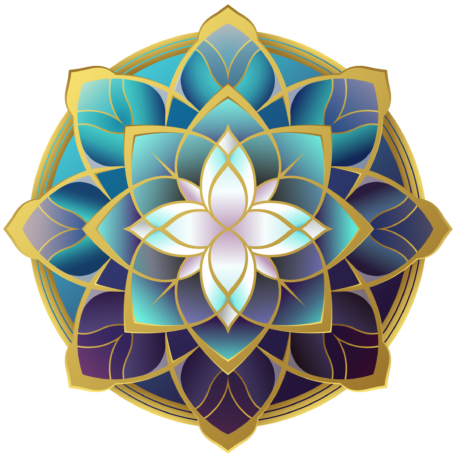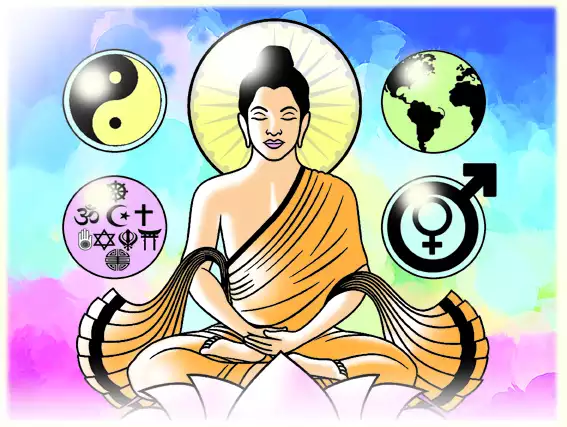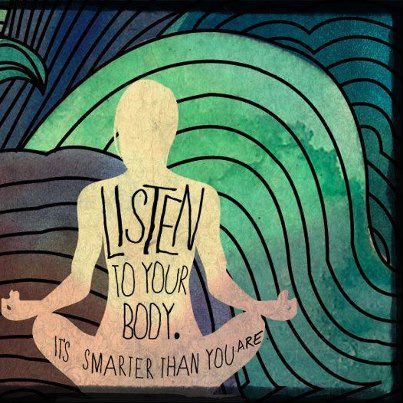Who isn’t? Seriously. Humans have apparently been on this quest for millennia… that is, after they realized they were suffering and that they had been avoiding this obvious matter in one way or another for a long, long time. Suffering can be a tricky thing to weed out after all – we humans appear to be both quick to divert our gaze from dis-ease and not so ready to admit that pleasurable experiences are a source of suffering as well. It’s easy to conclude that pain and displeasure are suffering but what about those touching moments in life? And those yummy sensual moments? All of those moments of elation, happiness, and wonder in mind and body? Come on.
Ultimately, they’re all conditional experiences. Every single one of them a transient phenomenon. And, as the Buddha noted a few years ago, any craving for or aversion to any experience, regardless of whether it is painful or pleasurable, is a source of suffering. The more devastating point that he made after a whole lot of austere personal investigation is that a person’s life is a seemingly endless array of cravings and aversions – both consciously and unconsciously. Therefore, every single person, at some point in his or her life, will come to know suffering. Intimately.
It’s one of those gnawing, biting, disconcerting facts that we, the human race, continually attempt to deny and push away. Yet here are the facts of life: according to the World Health Organization (WHO) one in four people will, in their lifetime, be impacted by a diagnosable mental health disorder and, at any given moment in time, approximately 450 million people worldwide are suffering from such disorders. In Canada and the U.S., mental health disorders have become the number one cause of disability. Staggering numbers yet this is just the dramatic tip of the iceberg, so to speak. Below the water’s surface lies the remainder – the average, everyday suffering of all human beings composed of the heartaches and heartbreaks, angers and sorrows, worries and fears, and the guilts and the shames associated with our aversions and the endless cravings for their pleasurable substitutes. We find ourselves reactively saying “no” or “yes” in binary-like simplicity to Life’s endless spectrum of experience while slowly and steadily losing our sense of harmony, balance, and flow amidst ill-conceived attempts to play God.
So how do we find our way out of this seemingly labyrinthine “mess”? Is it even possible?
There are innumerable teachings, many with proposed solutions, available to the person that begins to seek a solution to human suffering. No big surprise there; humans have been working on this dilemma for thousands of years. One potential resolution hinted at by some of our ancient teachers revolves around the notion that if we are able to rest, aware of and non-attached to both negative and positive experiences we may slip and fall effortlessly in-between both; the judgments and expectations dissolve, the shoulds and should nots discharge, and we recognize that which is prior to any thing – that which is the very ground of Being. It is a resolution that ultimately lies beyond the confines of the original problem. For the Buddha, it was the “Middle Way.” Rumi poetically pointed to it within his writing:
“Out beyond ideas of wrongdoing and rightdoing there is a field. I’ll meet you there. When the soul lies down in that grass, the world is too full to talk about ideas, language, even the phrase each other doesn’t make any sense.”
Patanjali, one of Yoga’s most influential wisdom-keepers, spoke to it suggesting the contemplation of opposites as a means for dealing with the unsettling fluctuations of mind. Some versions of the ancient practice of Yoga Nidra make extensive, explicit use of this practice.
It’s a deceptively simple practice to take on. Give it a try. It only takes a few moments and you may be delighted by the results. It’s easy to apply pretty much anywhere, anytime. Well, maybe avoid practicing it while driving, operating heavy machinery, or working at any task that requires your utmost attention, at least at first.
Here are some steps to get you started:
The Contemplation of Opposites
- Start by selecting something to place your attention on. It can be anything – a sensation, a thought, or an emotion. For example, a feeling of heaviness somewhere in your body. Go ahead and do that right now to practice.
- Now turn your attention to something that is an approximate opposite to your first experience. If you started by turning your attention to a sensation, pick another sensation that is the approximate opposite. For example, a feeling of lightness somewhere in your body. Locate a feeling of lightness in your own body right now to continue practicing.
- Next, rotate your attention back and forth between these two, seemingly opposite, experiences. For example, spend a few moments with the heavy feeling in your body, then switch your attention for a few moments to the light feeling, then turn back to the heavy feeling… over and over, back and forth between the opposites, each time shortening the time spent with each experience. In doing so, any mental grip that you may experience towards either experience starts to loosen. It becomes easier to let each one go as attention turns to its alternative.
- Eventually, after a few rotations of attention, attempt to watch both experiences at the exact same time. You may find that your attention still wants to jump from one experience to the other. If you find this happening, it is totally natural – keep practicing, attempting to experience the opposites at the exact same time. To practice using the provided example, notice both the heavy and light feelings in your body in this moment. Once you land on both sensations at the exact same time, see if you can keep your attention there for a few more moments.
- Repeat. Whenever you remember to, practice. Increase the difficulty gradually to support success. The sensations utilized within the above example are quite neutral for many people. To amplify the difficulty level of your personal practice essentially means that you choose something you crave for or are averse to as one side of your pair of opposites and find its approximate opposite for the other side. The more convinced we are of our craving or aversion, the more challenging this often becomes – even simply to locate one side of the pairing! For example, if you are experiencing a great level of ongoing anxiety and you choose that experience to contemplate, it may prove challenging to locate an approximate opposite for it, especially if you cannot remember the last time you felt at ease, relaxed, and peaceful. It is always there though if you search long enough for it – you may first find it in simply recognizing it in someone else, then by recalling a childhood memory or by realizing that some part of your body – even if it’s just the tip of your nose or a fingernail – is currently at ease.
An interesting aspect of this practice to keep in mind is that the intention is not actually to get rid of any particular experience. Rather, it is an open invitation for that experience to exist alongside with its opposite. All of it – every aspect of this magical, mysterious human experience – is welcome here.
A warning: Successfully bi-locating your attention on opposites, whatever those opposites may be, may lead to sudden, subtle, delightful changes. Object-oriented awareness – the type of awareness that is at the heart of craving and aversion – may fall away exposing that which was always already present: bare-naked awareness. If only for a moment the very source of suffering has fallen away. And, could it ever truly be for more than a moment?
Interested in exploring this more? Come join us for some of our online meditation practices, retreats or coaching sessions.
Enjoy eternity. It’s not going anywhere.



